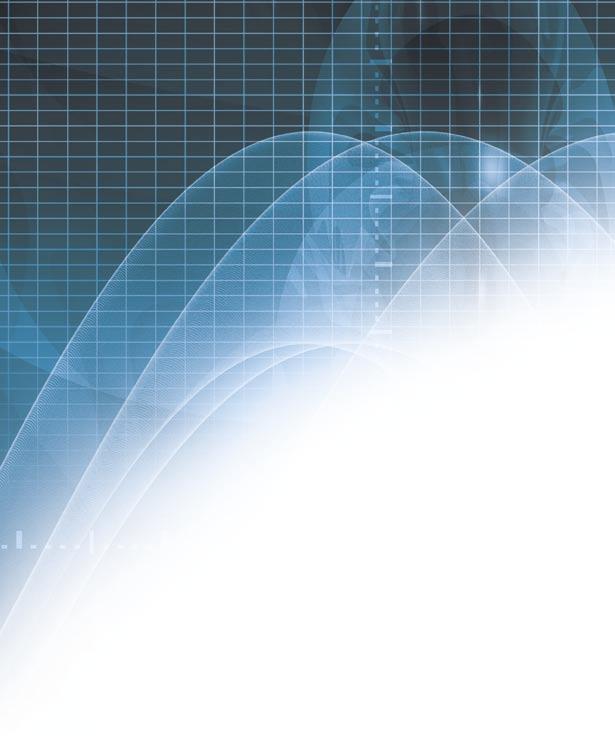
5 minute read
The Art of the Possible
Communications at Speed and Depth

Advertisement
Under the management of the Submarine Integration Program Office (PMW 770), the U.S. Navy has put in place highly-focused connectivity initiatives at the Program Executive Office for C4I and Space in San Diego, California. These efforts are addressing a broad spectrum of technology enablers, including advanced acoustic and acoustic-RF (radio frequency) communications, high-bandwidth satellite communications, and optical-fiber buoys – across all frequency bands (see Table 1) – that promise to achieve long-sought Communications at Speed and Depth (CSD) goals. And while it was in the midst of a comprehensive CSD Analysis of Alternatives (AoA) that was completed in the early fall of 2005, the Submarine Force was also pressing on with technology demonstrations that will underpin the art of the possible.
A future undersea communications network capability will enable communications among submerged submarines, Unmanned Undersea Vehicles (UUVs), and undersea sensors to multiply the effectiveness of the Submarine Force in maintaining undersea dominance. By coupling the undersea acoustic communications network with the mainstream Global Information Grid (GIG) communications infrastructure, end-to-end warfighter connectivity is enabled among surface, air, shore, submarines, other undersea platforms, and undersea sensors.
“The Submarine Communications at Speed and Depth Program extends the principles of FORCEnet below the ocean surface to provide the Submarine Fleet with two-way networked connectivity when operating at tactical depth and speed,” Navy Capt. Dean Richter, PMW 770 CSD Acquisition Program Manager, explained. “The goal of CSD is to multiply the effectiveness of submarine platforms in support of Navy, joint, and coalition warfare by enabling two-way communications and network-centric warfare while optimally engaged in the mission at hand. These increased operational capabilities will allow submarine platforms to maintain their stealth posture while supporting Special Operations Forces [SOF] and providing decisive firepower for the Joint Task Force [JTF] in the Global War on Terror [GWOT],” he noted. “Carrier and Expeditionary Strike Groups are provided with significantly enhanced protection against undersea threats with the full utilization of the superior weapons and surveillance capabilities of a submarine operating at depth in coordinated anti-submarine warfare operations to achieve undersea dominance.”
This ultimate outcome was anticipated in the “Submarine Force Future Capability Vision,” which states that “Submarines must be a part of the joint and service information networks, to include sensors and networks deployed from the submarine and off-board vehicles. Effective integration into these networks allows the submarine to share situational awareness, plan collaboratively and fight synergistically with other joint forces.” [Emphasis added.] The “Vision” calls out specific FORCEnet development goals, including “Connectivity from below periscope depth at tactically useful speeds to reduce time latency in the exchange of information for situational awareness, blue-force tracking, and target engagement.”
There are clearly strategic imperatives for effective CSD, Richter acknowledged. “CSD responds to the following critical operational goals for defense transformation as identified in the Quadrennial Defense Review Report 2001, the Secretary of Defense Transformation Planning Guidance of April 2003, and the FY 2004-2009 Defense Planning Guidance:


• Assuring information systems in the face of attack and conducting effective information operations. • Projecting and sustaining U.S. forces in distant anti-access or area-denial environments and defeating anti-access and area-denial threats. • Denying enemies sanctuary by providing persistent surveillance, tracking, and rapid engagement with high-volume precision strike, through a combination of complementary air and ground capabilities, against critical mobile and fixed targets at various ranges and in all weather and terrains. • Leveraging information technology and innovative concepts to develop an interoperable, joint C4ISR [Command, Control, Communications, Computers, Intelligence, Surveillance, and Reconnaissance] architecture and capability that includes a tailorable joint operational picture.
“We are looking to provide significant warfighting advances and two-way FORCEnet-centricity at the highest data rates possible at all speeds and depths,” Richter underscored.
Top Priority
“Based on a study by the Undersea FORCEnet Working Group, CSD is one of the Navy’s top three undersea priorities,” Richter added. “And it’s vitally important to ensure that the submarine, with its very capable sensors and weapons, is plugged into Sea Power 21’s strike-group network. Because of this, CSD is the submarine force’s number-one communications priority.”
The Navy is funding basic science and technology initiatives within the Office of Naval Research (ONR), as well as research and development efforts with several defense contractors and industry partners, addressing critical technologies that promise to yield significant capability. The Undersea FORCEnet Working Group stood up in March 2003 to help address these needs, with the first CSD Initial Capabilities Document completed that summer and subsequently approved on July 18, 2005. In response to a late2004 Navy request for ideas, industry and laboratories in the United States and abroad submitted more than 58 near- and far-term technology-focused white papers, which included more than 80 unique concepts. Twenty-two of these were ultimately selected for an Analysis of Alternatives (AoA) that was completed in September 2005. “We’ve found that no single concept or technology meets all of our needs, and thus we are investigating numerous technologies to generate a ‘family’ of solutions that provide incremental capability to the fleet over time,” Richter said.
These initiatives will follow up on demonstrations already conducted during fiscal year 2005 that focused on modernizing legacy, in-service communications systems, while also addressing new concepts of operations to take advantage of nearterm, “low-hanging fruit” improvements. “Even more advanced demonstrations are planned throughout the remainder of 2006,” Richter explained. “We expect to begin fielding near-term solutions as soon as early 2007, providing incremental enhanced capability to the fleet almost on an annual basis.”
Examples of such low-hanging fruit include a simple modification to the existing Buoyant Cable Antenna (BCA), which will allow submarines both to transmit and receive data while operating at modest depths and speeds. Historically, the BCA has been a receive-only system, but off Pearl Harbor in June 2005 the Navy demonstrated a two-way capability that provided internet-based “chat” beyond 50 nautical miles. The objective of an additional test in the Atlantic in August was to demonstrate beyond what was shown in Hawaii, and how new and unusual radios and waveforms can be used with this twoway BCA to extend the range, increase the data rate, and reduce the detectability of

continued on page 32
Graphic by Douglas Devlin and Marc Ray

The Buoyant Cable Antenna with High Frequency antenna and enhanced modem provides two-way voice and robust IP data connectivity from submerged submarines to ship, air, and shore-based warfighters.
Table 1. Communications Frequency Bands
EHF (Extremely High Frequency) 30-300 GHz
SHF (Super High...) 3-30 GHz
UHF (Ultra High...) 0.3-3 GHz
VHF (Very High...) 30-300 MHz
HF (High...) 3-30 MHz MF (Medium...) 300-3,000 kHz
LF (Low...) 30-300 kHz
VLF (Very Low...)

3-30 kHz
ELF (Extremely Low...) 0.3-3 kHz







